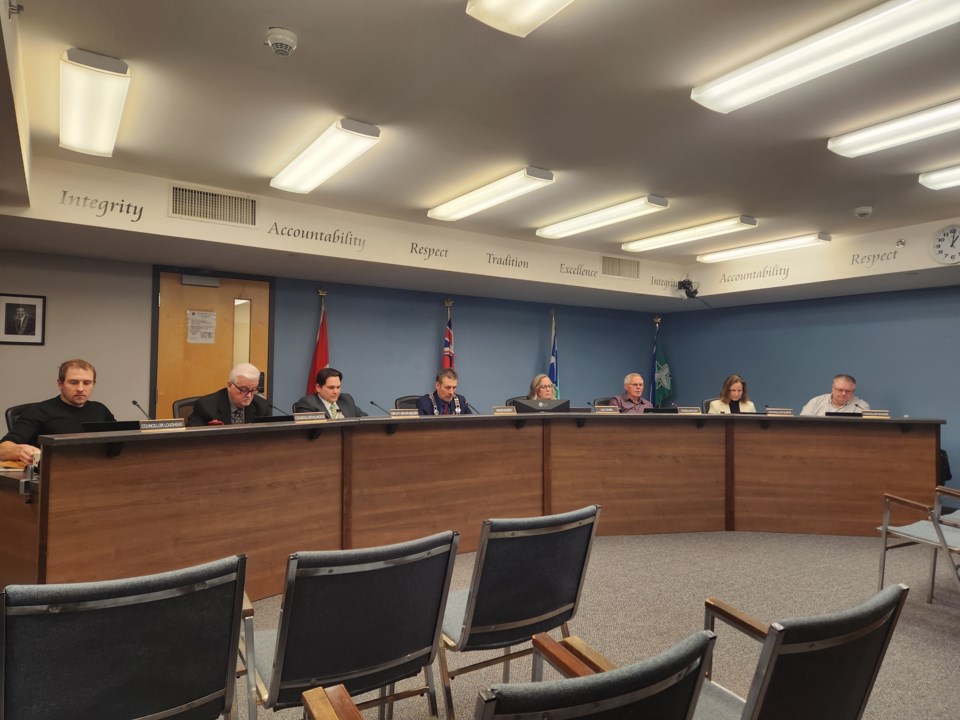After close to two decades, the comprehensive zoning bylaw for Grey Highlands is about to get a makeover.
And if the first council vote on the matter is any indication, the municipality is in for a long and - at times - controversial process.
The current zoning bylaw for Grey Highlands was approved back in 2004 and came into full force and effect in 2006. For close to 20 years it has not been updated and now requires a refresh.
At its meeting on April 5, council received an extensive report from the manager of planning, Matt Rapke, outlining the zoning bylaw update process, work plan, goals and next steps. Rapke sought permission for council to proceed to a public meeting to gather input about the upcoming process from the community.
The recommendation to hold a public meeting triggered a debate about whether or not the zoning bylaw update should first come to council at a committee of the whole meeting.
The discussion concluded with a 4-3 recorded vote in favour of first holding a committee of the whole session for council to comment on the update process.
“I strongly suggest we go to committee of the whole first. If we’re making a drastic change, we as councillors need a little bit of a walk-through as to what those changes are,” said Mayor Paul McQueen. “It’s so, so important the public understand what a zoning bylaw is and the changes we are making.”
The mayor also noted that it would be beneficial for the three new members of council to receive a full briefing on the zoning bylaw update process in the committee of the whole format.
Rapke said the intention of the recommended first public consultation would be to present an overview of the zoning bylaw update project, its impacts, the legal framework involved and the process going forward. He said there would be a series of public consultations as the municipality works through the process.
“This is a really big change. It’s a big bylaw. It’s probably the biggest bylaw we have,” he said.
Coun. Paul Allen said it would be beneficial to hold the public consultation meeting first.
“We can receive council and public comments at the same time,” said Allen.
Coun. Joel Loughead said he felt it was a good idea to hold a committee of the whole session first.
“I as a new councillor would benefit from some time in committee of the whole where we could have this kind of conversation,” he said.
The decision to proceed with the committee of the whole session first was favoured by Loughead, McQueen and councillors Tom Allwood and Dan Wickens.
A municipal comprehensive zoning bylaw governs all land use in a municipality. It determines where buildings and other structures can be located, the types of buildings that are permitted and how they may be used and the lot sizes and dimensions, parking requirements, building heights and densities (the number of people, jobs and building floor area per hectare) and setbacks from the street.
A zoning bylaw implements the objectives and policies of a municipality’s official plan and manages all land use and future development.
In his report, Rapke outlined the objectives of the initial draft of the new Grey Highlands zoning bylaw. They include:
1. Ensure the official plans and provincial policy statement are followed (required by the Planning Act).
2. Incorporate any new requirements that have been mandated by the provincial government through amendments to the Planning Act.
3. Add definitions where they are lacking and modify definitions where they are problematic.
4. Omit definitions that are unnecessary.
5. Clarify the intent of certain provisions, how the zones should be used, and how the new zoning bylaw should be amended in certain scenarios.
6. “Upzone” (i.e. add permissions to) most properties:
- a. Permit uses as-of-right (permit uses without requiring special permission through a variance or zoning amendment) that are regularly permitted through zoning amendments or minor variances and therefore eliminate unnecessary approval processes.
- b. Add permitted uses in select zones to allow for benign or vitally important uses that make sense.
7. “Downzone” (i.e. remove permissions from) properties where required and where it makes sense:
- a. Add new restrictions in certain areas that are required as per the Official Plan, such as applying minimum distance separation requirements to new dwellings on existing lots of record.
- b. Change inappropriate zones on certain properties to a more restrictive zone, such as by removing unused Industrial zoning from properties in tertiary settlement areas. (*Note that changes of this nature will not happen until later stages of the project.)
8. Simplify the new zoning bylaw wherever possible.
9. Make a document that is relatively easy to understand and navigate for administrators and the public, such as by italicizing and capitalizing all defined terms throughout the text.
10. Allow for flexibility in permitted uses and zone provisions to ensure Grey Highlands is adaptive, resilient, productive, and inclusive.
11. Enable a walkable and practical built-form in the downtowns.
12. Accept uncertainty, imperfection, minor inconvenience, change, and progress if it enables more important goals and objectives.
13. Make a bylaw that is fair, effective, and efficient in achieving the desired outcomes of the planning framework.
14. Strike balance between private property rights and the public interest.



